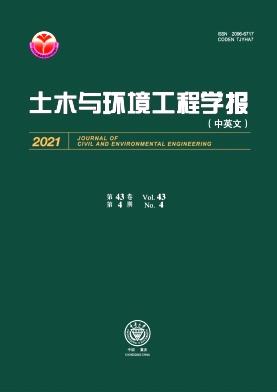养护和水泥类型对水箱混凝土渗漏劣化的影响
Q2 Engineering
Tumu yu Huanjing Gongcheng Xuebao/Journal of Civil and Environmental Engineering
Pub Date : 2018-01-01
DOI:10.4172/2165-784x.1000322
引用次数: 2
摘要
在埃塞俄比亚,储水罐中的混凝土过早劣化是一个普遍的问题。本研究旨在通过压缩试验、吸水试验和酸侵蚀试验,评价水泥类型和湿养护期对混凝土抗浸漏性能的影响。为了实现这一目标,将54个等级为C-30、水灰比为0.53的混凝土试件分为两组,每组分别进行3,7,10和28天的湿养护。第一组由27个由OPC制成的立方体组成,而第二组由PPC制成。采用方差分析检验各变量对吸收率的显著性。固化10天及以下,PPC的吸附率高于OPC;而固化良好的PPC在58天和98天时表现出更好的吸附性能。方差分析表明,使用PPC制成的固化良好的标本的吸附率明显低于年龄为98天的OPC。PPC的抗酸侵蚀性能优于OPC。研究结果表明,混凝土水箱选用熟化的opc和10天固化的ppc可能是混凝土挡水结构发生浸出和渗漏的原因。该研究对储水结构的设计有一定的参考价值。本文章由计算机程序翻译,如有差异,请以英文原文为准。
Effects of Curing and Cement Type on Leak deterioration of Concrete in Water Tanks
Premature-deterioration of concrete in water storage tanks is a common problem in Ethiopia. The research aims at evaluating the effects of cement-types and wet-curing period on the resistance of concrete to leaching and leakage, based on compression, water absorption, and acid attack tests. To meet this objective, 54 concrete specimens with a grade of C-30 and water to cement ratio of 0.53 were casted in to two groups, each subjected to 3, 7, 10, and 28 days wet curing. The first group comprised 27 cubes made from OPC, while the second made from PPC. ANOVA was employed to test significances of variables on sorptivity. The sorptivity was higher for PPC than OPC for 10days and below cured specimens; however, well cured PPC exhibited better sorptivity performance at age of 58 and 98 days. ANOVA indicated that well-cured specimens made using PPC had significantly showed lower sorptivity than OPC age of 98 days. The resistance to acid attack of PPC was better than OPC. The finding showed that the selection of well cured-OPC and 10 days cured-PPC for concrete water tanks could be the cause for deterioration associated with leaching and leakage in concrete water retaining structures. The study contributes to the design of water storage structures.
求助全文
通过发布文献求助,成功后即可免费获取论文全文。
去求助
来源期刊

Tumu yu Huanjing Gongcheng Xuebao/Journal of Civil and Environmental Engineering
Engineering-Architecture
CiteScore
1.30
自引率
0.00%
发文量
5346
 求助内容:
求助内容: 应助结果提醒方式:
应助结果提醒方式:


